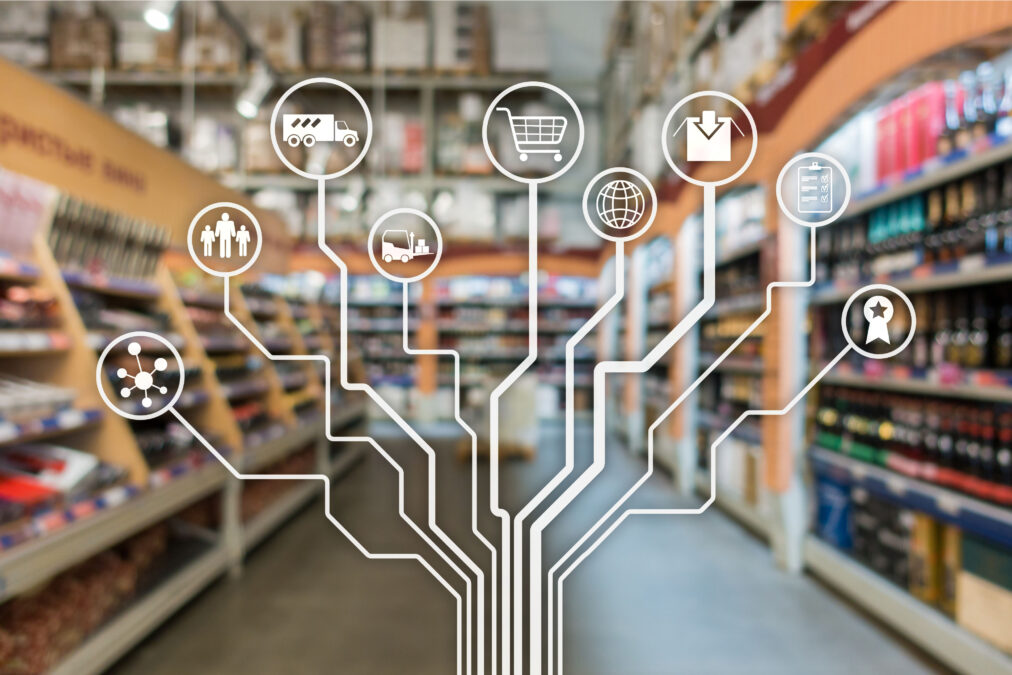Although implementing disruptive innovation can present a range of challenges, a business model that is stagnant for decades cannot remain successful indefinitely and is vulnerable to the next wave of innovation. This is the driving force behind the evolution of the retail business process.
In the heyday of Retail 1.0 during the 1980s, barcodes and scan-based trading technology introduced a basic level of automation, somewhat easing the burden of manual counts for inventory management.
Fast-forward a couple decades to Retail 2.0. During that phase of evolution, the industry saw some improvements in supply chain optimisation with greater efficiencies in warehouses and distribution centres, as well as loss prevention systems.
However, these developments were still primarily enabled with barcode (sku identifier) technology, which offers limited opportunities for improvement because each item or pallet needs to be scanned individually.
>See also: Can RFID technology do for fashion what it has done for music festivals?
Yet as technology evolves it then creates capability and new business models that were not possible before. The advent of affordable UHF RFID and item-level technologies have ushered in a new ceiling of capability for retailers.
Today’s consumers demand a new level of service from their retailer and a seamless omnichannel experience that both transcends and blends the online, mobile and in-store experiences. And this omnichannel customer experience of the 21st century requires an inventory management process that only RFID technology can enable.
Enter the era of Retail 3.0: the demand of having to deliver a new level of customer service, and operational competitive threats, are creating a ‘burning platform’ that is the motivation behind retailers changing and innovating.
A seismic shift to Retail 3.0
While customer expectations are the impetus behind this paradigm shift, it is RFID technology that is ushering in the new era of Retail 3.0 by enabling widespread changes across numerous processes in the retail world.
Retail 3.0 creates a new operational benchmark for retailers by taking advantage of a number of innovations, including item-level inventory management, customer shopping behavior monitoring, new customer experience and omnichannel execution.
All of these innovations rely on RFID to some extent and enable these new operational realities for retailers.
As RFID technology has gained traction, item-level inventory management has advanced significantly, reducing sales lost to out-of-stocks and increasing customer satisfaction when shoppers find exactly what they want.
And an important consequence of accurate, item-level inventory management is the enablement of omnichannel, allowing the customer to receive their purchase where, how and when they like, regardless of where it was purchased.
RFID implementations can increase retail sales by an average of 5% while also reducing inventory by an average of 10%.
>See also: Could the IoT in manufacturing tackle the global problem of food waste?
Brave new world
Each shift in the retail evolution has created significant opportunities while disrupting the status quo. From the creation of new backend procedures to the training of personnel, changing the status quo requires diligence and vision.
Yet there has not been a more compelling and promising shift than the one that is happening right now as the Retail 3.0 era is ushered in.
It’s important to remember that changes in the business model go hand-in-hand with making the processes user-friendlier. RFID, when done right, makes inventory management processes faster and easier, while freeing up staff to do higher value things.
For many retailers, RFID can provide greater inventory accuracy, reduction of shrink, fewer sales lost to out-of-stocks, efficient omnichannel enablement and elimination of third-party audits.
Sourced from Dean Frew, SVP for RFID solutions and CTO, SML Group










